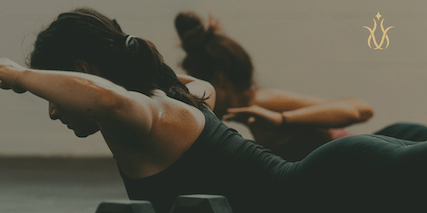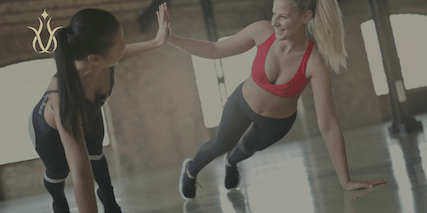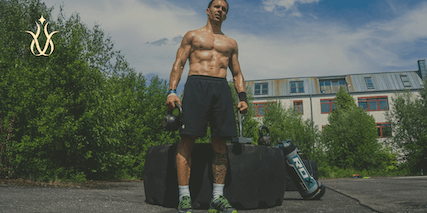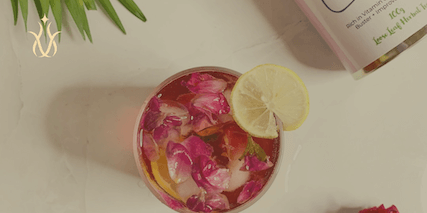Embark on a journey to better physical health with Pilates, a holistic exercise method that improves strength, balance, and flexibility. This guide details how Pilates exercises target the core, tone the body, and enhance athletic performance by integrating mindful movements and breath control. Learn about the different styles of Pilates, from mat-based routines to equipment exercises like the Reformer, and how each can contribute to a stronger, more balanced, and flexible body.
Whether you’re a beginner looking to start your fitness journey or an experienced athlete aiming to supplement your training, discover how Pilates can be tailored to meet your fitness goals and provide comprehensive benefits for your body and mind.
What is Pilates?
Pilates is a form of exercise that focuses on strengthening the core muscles, improving flexibility, and enhancing overall body control and balance. Joseph Pilates developed it in the early 20th century. It has gained popularity as a holistic approach to fitness and well-being.
Pilates exercises are performed on a mat or using specialised equipment such as the Reformer, Cadillac, or Pilates chair. They typically involve controlled movements and precise alignment, emphasizing proper breathing and mindful concentration.
The primary principles of Pilates include centring, concentration, control, precision, breath, and flow. These principles guide the execution of each exercise, promoting a mind-body connection and efficient movement patterns.
Pilates can benefit people of all fitness levels, from beginners to athletes. It helps improve core strength and stability, posture, flexibility, muscular endurance, and coordination. A Pilates strength training program promotes a strong and balanced musculoskeletal system by focusing on deep abdominal and back muscles, reducing the risk of injuries and enhancing overall body awareness.
Regular practice of Pilates can lead to various benefits, such as improved posture and alignment, increased muscular strength and tone, enhanced flexibility and range of motion, reduced back pain, improved athletic performance, and a sense of relaxation and mental well-being.
Learning Pilates from a qualified instructor is important, especially if you are new to the practice. They can provide guidance on proper form and a strength training program tailored to your individual needs. Whether you choose group classes or private sessions, Pilates offers a versatile and effective approach to exercise and mindful movement.
Is Pilates Yoga?
No, Pilates is not yoga. While both yoga and pilates involve mind-body practices and focus on enhancing physical and mental well-being, they have distinct origins, principles, and approaches.
Joseph Pilates developed Pilates as an exercise emphasising core strength, stability, and body control. It incorporates controlled movements, precise alignment, and specialised equipment to target specific muscle groups and improve overall body conditioning. Pilates aims to build strength, flexibility, and endurance while promoting proper posture and alignment.
On the other hand, yoga is an ancient practice that originated in India and encompassed a broader philosophical and spiritual tradition. Yoga involves physical postures (asanas), breath work (pranayama), meditation, and ethical principles. It is a holistic practice focusing on physical, mental, and spiritual well-being. Yoga cultivates self-awareness, balance, flexibility, strength, and inner peace.
While some exercises or movements may overlap between yoga and pilates, they have different emphases and intentions. Pilates focuses more on physical conditioning and core strength, while yoga encompasses a broader range of practices that promote physical, mental, and spiritual balance.
Ultimately, whether you choose Pilates or yoga depends on your personal goals, preferences, and needs. Both yoga and Pilates practices offer unique benefits and can complement each other in a well-rounded fitness and wellness routine.
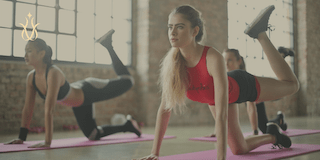
What is Pilates Good For?
Pilates is good for various aspects of physical and mental well-being. Here are some benefits of Pilates:
Core Strength: Pilates focuses on strengthening the core muscles, including the deep abdominal muscles, back muscles, and pelvic floor. A strong core provides stability, improves posture, and supports the spine.
Flexibility and Muscle Tone: Pilates exercises involve controlled and fluid movements that help improve flexibility, increase range of motion, and lengthen muscles. It promotes balanced muscle development, creating long, lean muscles without bulk.
Posture and Alignment: Pilates emphasises proper alignment and posture, promoting good body mechanics and reducing the risk of injuries. It can help correct postural imbalances and develop a more upright and balanced posture.
Improved Body Awareness: Pilates encourages mindful movement and body awareness. Through precise and controlled exercises, you can better understand your body, its alignment, and movement patterns.
Injury Rehabilitation and Prevention: Pilates is often used as a rehabilitative tool for various injuries and conditions, including lower back pain, joint issues, and post-surgical recovery. It focuses on targeted strengthening and gentle movements, promoting safe and effective rehabilitation as well as injury prevention.
Stress Reduction and Mind-Body Connection: Pilates incorporates breathing techniques and a mindful approach to movement, which can help reduce stress, enhance relaxation, and improve the mind-body connection. It promotes a sense of calm and overall well-being.
Increased Energy and Vitality: Regular Pilates practice can boost energy levels, improve circulation, and enhance overall vitality. The controlled movements and focus on breath help increase oxygen flow, rejuvenating the body and mind.
It’s important to note that individual experiences may vary, and the benefits of Pilates can depend on factors such as frequency of practice, instructor guidance, and personal commitment. Consulting with a qualified Pilates instructor can help tailor the practice to your specific needs and goals.
What are Pilates Classes?
Pilates classes are group or individual sessions led by a qualified Pilates instructor. These classes typically involve a series of exercises and movements that focus on core strength, flexibility, and overall body conditioning. The exercises in Pilates classes are performed on a mat or using specialised equipment such as the Pilates Reformer, Cadillac, or Wunda Chair.
During a Pilates class, the instructor guides participants through controlled and precise movements targeting specific muscle groups. The exercises aim to improve core stability, posture, flexibility, and body awareness. The instructor provides verbal cues and demonstrations to ensure proper form and technique.
Pilates classes can vary in intensity and difficulty level, catering to different fitness levels and goals. Some classes may focus on mat-based exercises, while others incorporate the use of Pilates equipment. Classes may also incorporate props like resistance bands, small Pilates balls, or foam rollers to add variety and challenge to the exercises.
In a Pilates class, participants are encouraged to focus on breath control, concentration, and alignment while performing the movements. The class environment often promotes a sense of mindfulness and the mind-body connection.
Pilates classes can be found in specialised studios, fitness centres, community centres, or even online platforms. It is recommended that you choose a class led by a qualified Pilates instructor who has completed comprehensive training and has experience working with individuals of various fitness levels and needs.
Regular Pilates classes can help individuals improve their strength, flexibility, posture, and overall body awareness, leading to better physical fitness and well-being.
What are Pilates Exercises
Pilates exercises are a series of movements designed to improve strength, flexibility, posture, and overall body conditioning. They target the core muscles, including the abdominal, back, hip, and glute muscles, while also engaging other muscle groups throughout the body. Pilates exercises emphasise controlled and precise movements with a focus on proper alignment, breathing, and body awareness.
Various Pilates exercises can be performed on a mat or using specialised equipment such as the Pilates Reformer, Cadillac, or Wunda Chair.
Here are a few examples of common Pilates exercises:
The Hundred: This exercise involves lying on your back, lifting your head and shoulders off the mat, and pumping your arms up and down while breathing deeply.
Roll Up: Starting in a lying position, you roll your spine off the mat one vertebra at a time, reaching forward with your arms and then rolling back down with control.
Single Leg Circle: Lying on your back with one leg extended toward the ceiling, you make circular movements with your leg while keeping your pelvis stable.
Pilates Bridge: Lying on your back with your knees bent and feet flat on the mat, you lift your hips off the mat, engaging your glutes and core muscles.
Teaser: This exercise involves sitting on the mat, balancing on your sit bones, and gradually rolling back to a V-sit position while extending your legs and reaching your arms forward.
Side Plank: From a side-lying position, you lift your hips off the mat, balancing on your forearm and side of the foot, engaging the core and side muscles.
These are just a few examples, and there are many more Pilates exercises that target different muscle groups and movement patterns. Pilates exercises can be modified or progressed to accommodate different fitness levels and goals.
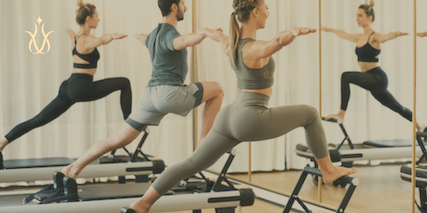
What is a Pilates workout?
A Pilates workout is a low-impact form of exercise designed to strengthen muscles, improve postural alignment, increase flexibility, and enhance mind-body awareness. It was developed in the early 20th century by Joseph Pilates, hence the name, and focuses on the body’s core – the abdomen, obliques, lower back, inner and outer thigh, buttocks, and so on.
During a Pilates session, you’ll perform a series of exercises on a mat or using special equipment like the Reformer, Pilates Cadillac, or Wunda Chair. The exercises aim to promote balanced muscle development, whole-body strength, and flexibility.
Pilates workouts can be tailored to suit everyone, from beginners to advanced athletes. They often include elements of controlled breathing and mindfulness, making them a comprehensive mind-body workout. Pilates’s key principles include precision, control, concentration, centring, and flow.
Is Pilates a Good Workout?
Yes, Pilates is considered a good workout for many reasons. It offers a comprehensive and balanced approach to fitness that focuses on strength, flexibility, and body awareness.
Here are some reasons why Pilates is considered a beneficial workout:
Core Strength: Pilates exercises target the deep core muscles, including the abdominal muscles, back muscles, and pelvic floor. Pilates helps improve core stability, posture, and overall strength by engaging and strengthening these muscles.
Full-Body Conditioning: While Pilates primarily focuses on the core, it also engages other muscle groups throughout the body. It helps strengthen and tone the arms, legs, glutes, and back, promoting overall body conditioning.
Flexibility and Range of Motion: Pilates exercises emphasise controlled and dynamic movements that help improve flexibility and joint mobility. The elongating and stretching movements in Pilates contribute to improved posture, reduced muscle tension, and increased range of motion.
Posture and Alignment: Pilates promotes proper alignment and body awareness, helping to improve posture and alignment during exercise and daily life. Strengthening the muscles that support good posture can help alleviate or prevent common postural imbalances.
Low-Impact and Joint-Friendly: Many Pilates exercises are low-impact, making them suitable for individuals of various fitness levels and ages. The controlled and precise movements in Pilates reduce stress on the joints while still providing an effective workout.
Mind-Body Connection: Pilates emphasises the mind-body connection, focusing on breath control, concentration, and mindfulness during each movement. This aspect of Pilates can help reduce stress, enhance mental clarity, and promote overall well-being.
It’s important to note that the effectiveness of a Pilates workout depends on various factors, including the quality of instruction, proper form and technique, and consistency in practice. Working with a certified Pilates instructor or attending classes led by experienced instructors can ensure that you receive proper guidance and maximise the benefits of your Pilates workout.
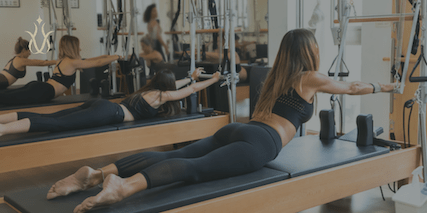
What is Reformer Pilates?
Reformer Pilates is a dynamic method of Pilates exercise performed on a unique device known as a ‘reformer’. This device comprises a bed-like frame equipped with a flat platform called the ‘carriage’. This carriage is linked to the reformer frame by a series of springs, which offer different resistance levels as you push or pull the carriage along the frame. The carriage is fitted with shoulder blocks to prevent you from sliding off the end of the reformer while performing the movements.
One end of the reformer showcases an adjustable bar termed a ‘footbar’, which can be manipulated by either your hands or feet to shift the carriage. Furthermore, the reformer includes long straps featuring handles attached to the frame’s top end, allowing arm or leg movements to manipulate the carriage as well.
The beauty of Reformer Pilates lies in its adaptability. Whether you’re a beginner or a seasoned fitness enthusiast, Reformer Pilates is tailored to accommodate all fitness levels. This exercise regime enhances strength, flexibility, coordination, and balance. Furthermore, the reformer is customisable, offering both support and resistance. This means that individuals with restricted movement or injuries can still participate, performing safely modified exercises.
Joseph Pilates, the founder of the Pilates method, originally developed the concept of the reformer. His goal was to assist individuals in boosting their physical strength, flexibility, and posture while also heightening mental awareness. Today, Reformer Pilates classes are a staple in many Pilates studios and have gained a loyal following among fitness enthusiasts around the globe.
What is Pilates Cardio?
Pilates Cardio combines traditional Pilates exercises with a more dynamic and higher-intensity workout to increase the heart rate and provide a cardiovascular challenge. It’s designed to integrate the precision and focus of Pilates with the advantages of aerobic exercises.
Typically, in a Pilates Cardio workout, you will perform sequences of Pilates movements at a faster pace than traditional Pilates. The exercises can be enhanced with the use of small equipment like the Pilates ring or resistance bands. Additionally, Pilates Cardio can include a Pilates reformer, where exercises are performed on a sliding platform with spring resistance.
Pilates Cardio can provide the following benefits:
Increased heart rate: As the exercises are performed at a faster pace, they increase the heart rate, improving cardiovascular fitness and endurance.
Burns more calories: Due to its higher intensity and aerobic nature, Pilates Cardio can lead to a higher caloric expenditure compared to traditional Pilates, contributing to weight loss and body toning.
Boosts energy levels: The increased blood circulation from the cardiovascular component can lead to improved energy levels.
Maintains the benefits of traditional Pilates: Despite the added intensity, Pilates Cardio maintains the core-strengthening, flexibility-enhancing, and posture-improving benefits of traditional Pilates.
It’s important to note that as Pilates Cardio is more strenuous than traditional Pilates, it’s advisable to have a foundational understanding of basic Pilates principles and techniques before incorporating the cardiovascular component. As always, consult a fitness or health professional before starting any new exercise regimen.
Does Pilates Work?
Yes, Pilates does work when practised consistently and correctly, offering a range of physical and mental benefits. However, like any other form of exercise, the results may vary from person to person, depending on factors such as the intensity and regularity of practice, diet, sleep, and overall lifestyle.
Here are a few ways that Pilates has been found to be effective:
Improved Core Strength: Pilates exercises target the muscles in your abdomen, lower back, hips, and pelvis, leading to increased core strength and stability. This is especially beneficial for improving balance and coordination and reducing back pain.
Enhanced Flexibility: Pilates encourages the stretching and lengthening of muscles, which can result in increased flexibility. Regular practice can lead to a better range of motion and joint mobility.
Better Posture: Pilates promotes alignment and postural awareness, which can lead to improved posture over time. This is beneficial not only for appearance but also for reducing the risk of injury and chronic pain.
Stress Relief: Pilates emphasizes the mind-body connection, which can help reduce stress and promote relaxation. The practice encourages mindfulness and deep, controlled breathing, which can calm the mind.
Weight Management: While Pilates is not primarily a cardio workout, it does contribute to overall fitness and, combined with a balanced diet and other forms of exercise, can help manage weight and promote lean muscle tone.
Injury Rehabilitation: Pilates is often used as a form of physical therapy to aid in injury rehabilitation. It’s low-impact and can be adapted to various fitness levels, making it a safe option for many individuals.
As always, it is important to consult with a healthcare professional before starting a new fitness regimen. It can also be helpful to work with a qualified Pilates instructor, at least initially, to ensure that you perform the exercises correctly and safely.
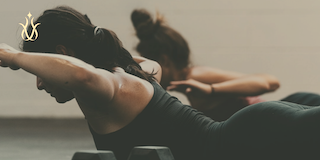
Is Pilates Good for Strength Training?
Absolutely, Pilates is indeed a beneficial form of strength training. Pilates focuses on the “powerhouse” of your body – the abdominal, lower back, and pelvic muscles. Here’s why Pilates is effective for strength training:
Develops Core Strength: The core muscles are the foundation of the Pilates workout. The exercises aim to build muscle strength and endurance in your abs, obliques, lower back, and hips.
Whole Body Fitness: Unlike some types of exercise that target specific muscles, Pilates works on the whole body, providing balanced muscle development.
Improves Stability and Balance: Many Pilates exercises require you to hold your body in balanced positions. These positions stimulate the smaller, stabilising muscles that are often underused in daily life or regular workouts.
Flexibility: While strength training workouts can sometimes shorten muscles and make them tight, Pilates lengthens and strengthens them, enhancing elasticity and joint mobility. This unique aspect of Pilates makes it an effective strength training exercise for many athletes.
Low Impact: Pilates’s slow, controlled movements minimise the risk of injury, making It an effective strength training method for people at different fitness levels. It is also an excellent option for those recovering from injuries.
Remember, Pilates is versatile and can be tailored to individual needs. Pilates can be part of your strength training regime, whether you’re a beginner or a pro athlete.
Is Pilates Resistance Training?
Yes, Pilates can be considered a form of resistance training. In fact, one of Pilates’s key principles is using resistance to strengthen and tone muscles, improve flexibility, and promote better posture.
There are two main types of Pilates: Reformer Pilates and Mat Pilates.
Mat Pilates primarily uses your own body weight as resistance. Exercises are performed on a mat, much like in a yoga class. While this may not sound like traditional resistance training, pushing, pulling and holding your body against gravity is a form of resistance.
Reformer Pilates, on the other hand, utilises a specialised machine called a reformer. The reformer has a moving carriage and adjustable springs to modify the level of resistance, making it more akin to traditional resistance training methods.
In both types, resistance is used to challenge the muscles, helping to increase strength, tone muscles, and enhance endurance. Furthermore, Pilates exercises often target the smaller, stabilising muscles, which can complement traditional resistance training programs.
However, remember that while Pilates does qualify as a form of resistance training, it may not be sufficient as the only form of resistance training in your routine, particularly if you have specific strength goals. It’s always a good idea to include a variety of exercises and workout styles in your routine.
What are The Best Online Pilates Courses?
There are several reputable online platforms and websites that offer high-quality Pilates courses.
Here are some of the best online Pilates courses available:
Pilates Anytime: Pilates Anytime is a popular online Pilates platform that offers a wide range of classes led by experienced instructors. They provide classes for all levels, from beginner to advanced, and cover various Pilates styles and equipment.
The Balanced Life: The Balanced Life is an online Pilates community created by Robin Long. They offer Pilates workouts and programs designed specifically for busy women. The courses focus on building strength, improving flexibility, and creating a balanced and sustainable fitness routine.
Glo: Glo is an online wellness platform that offers a diverse selection of Pilates classes, including mat Pilates and Pilates with props. They have classes for all levels and provide detailed instruction and guidance from renowned Pilates instructors.
Pilatesology: Pilatesology is an online Pilates studio that offers a vast library of Pilates classes taught by expert instructors. They offer both classical Pilates and contemporary Pilates classes, catering to different preferences and skill levels.
Udemy: Udemy is a popular online learning platform that offers a variety of Pilates courses taught by certified instructors. The courses cover different aspects of Pilates, including mat work, equipment-based exercises, and specialised Pilates workouts.
When choosing an online Pilates course, consider factors such as the instructor’s qualifications and experience, the course content, customer reviews, and your own specific goals and needs. Additionally, it can be beneficial to sample free trial classes or explore course previews to get a sense of the teaching style and whether it aligns with your preferences.
What are The Best Pilates Apps?
There are several excellent Pilates apps available that provide a convenient way to access Pilates workouts and guidance from the comfort of your home.
Here are some of the best Pilates apps:
Pilates Anytime: Pilates Anytime, in addition to its online platform, also has a mobile app available for iOS and Android devices. It offers a vast library of Pilates classes, including mat work and equipment-based exercises, suitable for all levels. The app allows you to stream workouts, save your favourite classes, and track your progress.
Glo: Glo is a comprehensive wellness app offering Pilates classes, yoga, meditation, and other fitness disciplines. It features a wide range of Pilates workouts, from beginner to advanced levels, taught by renowned instructors. The app allows you to download classes for offline access and offers personalised recommendations based on your preferences.
Daily Burn: Daily Burn is a popular fitness app that provides a variety of workout programs, including Pilates. It offers on-demand Pilates classes taught by certified instructors, with options for different durations and difficulty levels. The app also offers tracking features to monitor your progress and achievements.
Pilates Metrics: Pilates Metrics is a unique app that analyses and improves your Pilates practice. It uses motion tracking technology to provide real-time feedback on your movements and alignment during Pilates exercises. The app tracks your progress over time, offers personalised recommendations, and provides detailed metrics to enhance your Pilates practice.
Down Dog: While not exclusively a Pilates app, Down Dog offers a range of high-quality Pilates workouts as part of its repertoire. The app allows you to customise your workouts based on your preferences, including the length, difficulty, and focus areas. It offers clear instructions and visual demonstrations for each exercise.
When selecting a Pilates app, consider factors such as the variety and quality of the workouts, the expertise of the instructors, user reviews and ratings, and any additional features or functionalities that align with your preferences and goals.
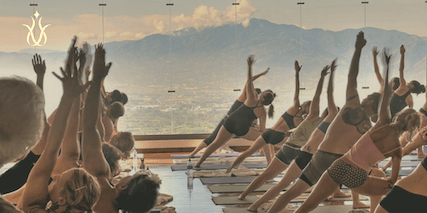
What are The Best Pilates Retreats in The World?
Choosing the best Pilates retreat depends on your preferences for location, level of luxury, and specific focus (like Pilates mixed with other activities such as yoga, surfing, or wellness practices).
Here are some of the top-rated Pilates retreats around the world known for their excellent programs and stunning locations:
Absolute Sanctuary in Koh Samui, Thailand: Offers a variety of wellness and fitness retreats, including yoga and Pilates. Known for its stunning location and world-class instructors.
Como Shambhala Estate in Bali, Indonesia: This luxury retreat offers yoga and Pilates alongside a range of other wellness activities. The lush surroundings and luxurious accommodations make it a top choice for many.
BodyHoliday in St. Lucia: A Caribbean getaway that offers an all-inclusive experience, including various fitness classes like Pilates, watersports, and wellness treatments.
Pilates Nosara in Costa Rica: This retreat offers Pilates mat classes and equipment sessions, as well as yoga and surfing. It’s located in the beautiful coastal village of Nosara, known for its excellent surf breaks and wide sandy beaches.
The Retreat Costa Rica in Atenas, Costa Rica: This luxury wellness resort offers yoga and Pilates alongside a variety of other wellness activities. It’s known for its stunning mountain location, organic cuisine, and luxurious spa.
Champneys in England, UK: This health spa offers a range of wellness retreats, including yoga and Pilates. The historic property and lush countryside add to the relaxing atmosphere.
Parrot Cay by COMO in Turks and Caicos: This luxury resort offers private yoga and Pilates sessions along with other wellness activities. It’s known for its stunning beach location and world-class service.
Rancho La Puerta in Tecate, Mexico: This fitness resort and spa offers yoga and Pilates classes as part of its extensive wellness program. The beautiful mountain location and extensive gardens add to the tranquil atmosphere.
Cliff House Hotel in Ardmore, Ireland: Offers a luxury wellness escape with a focus on Pilates and Yoga. Enjoy the breathtaking ocean views as you relax and rejuvenate.
White Ibiza Retreats in Ibiza, Spain: Known for its beautiful location and holistic approach to wellness, they offer retreats focusing on yoga and Pilates.
Remember, the “best” retreat is the one that suits your personal needs, budget, and preferences the most.
Resources:
Wells C et al (2012). Defining Pilates exercise: a systematic review.
Vancini RL et al (2017). Pilates and aerobic training improve levels of depression, anxiety and quality of life in overweight and obese individuals.
Cleveland Clinic (2023). Pilates 101: What It Is and Health Benefits. Available at: https://health.clevelandclinic.org
Self.com (2022). 10 Things to Know Before You Take Pilates Classes. Available at: https://www.self.com/story
WebMD (2023). Pilates: What is it, Benefits and More. Available at: https://www.webmd.com/fitness-exercise
Disclaimer: This article is for informational purposes only and should not replace professional medical advice. If you have specific concerns or medical conditions, it is recommended to consult with a healthcare professional for personalised guidance and support.
